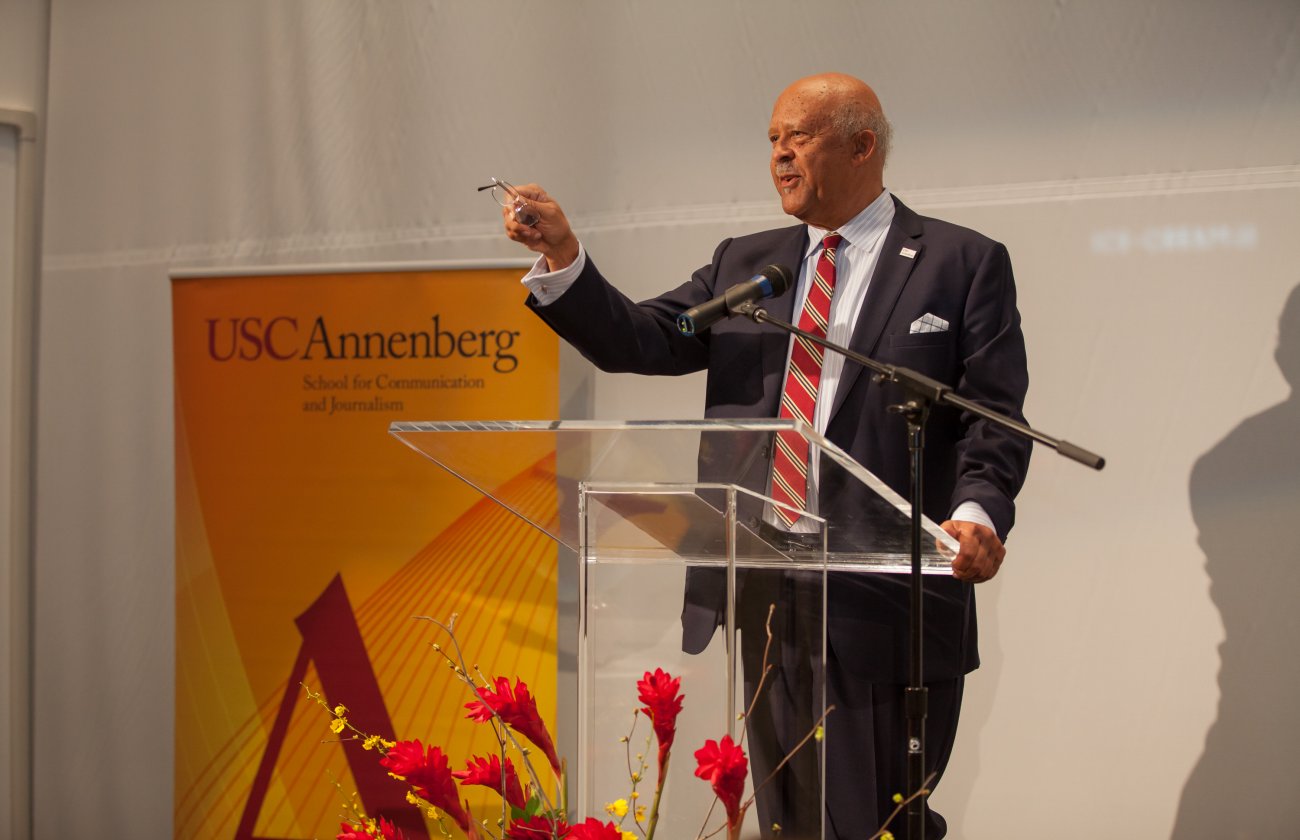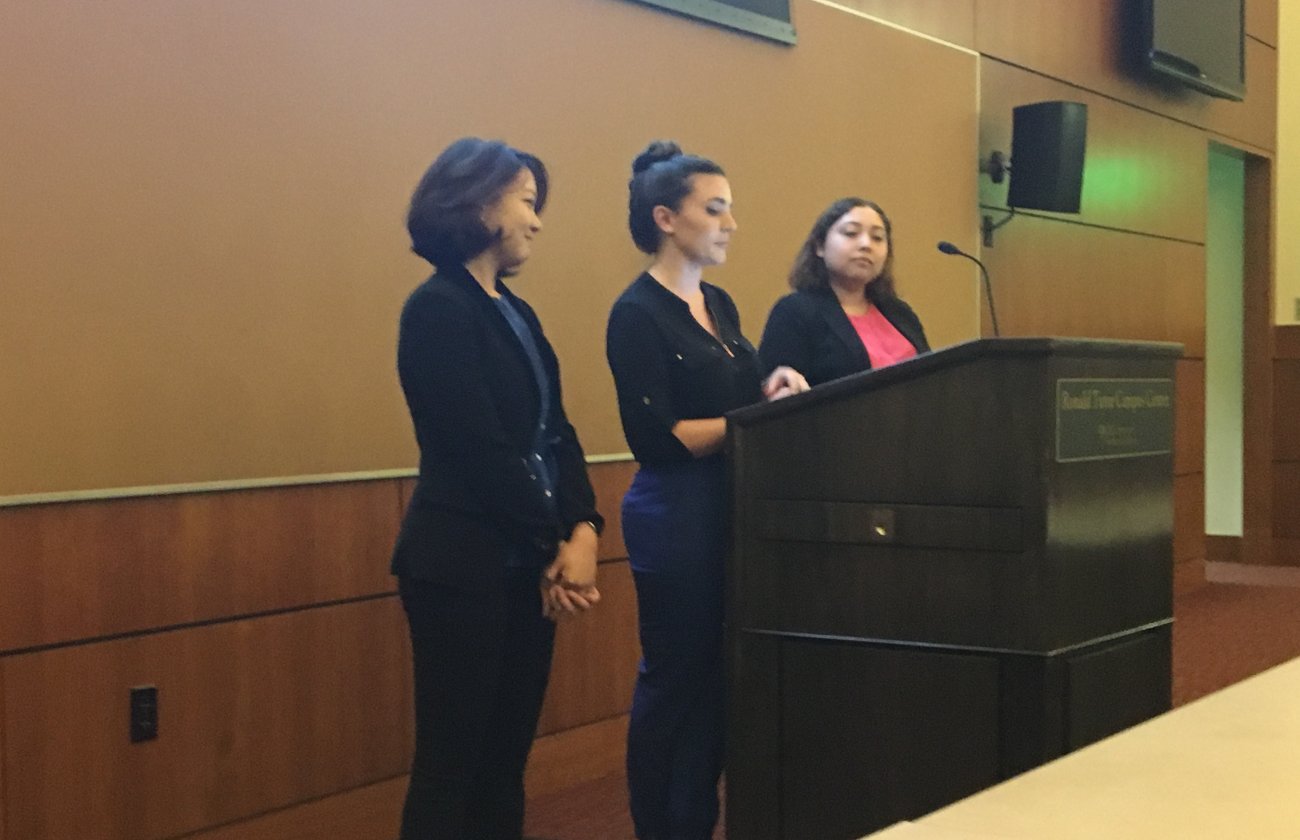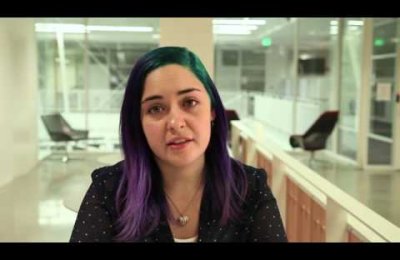When USC Annenberg senior Stassy Olmos opened three emails on her birthday each expressing congratulations, she didn’t understand why turning 22 would warrant such recognition. These messages were not for the broadcast and digital journalism major’s birthday, though: Olmos had just won a Hearst Journalism Award in the television news- features division. Competing against more than a hundred other journalists from colleges and universities across the nation, Olmos received top honors and a scholarship for two packages she originally reported and produced in USC Annenberg’s JOUR 402: Broadcast Reporting class with professor Vince Gonzales. When director of Annenberg Television News Stacy Scholder — who has submitted USC Annenberg’s student work to the Hearst Journalism Awards for the past seven years — approached Gonzales for recommendations in November, Olmos stood out among the rest. “Stassy jumps off the screen,” Scholder said. “She definitely has this magnetism. There is an energy and authenticity about her. When she is on the air, you’re just glued.”
And the judges agreed. Olmos is now eligible to enter Hearst’s semi-final round.
Throughout the academic year, the Hearst Journalism Awards host 15 different monthly competitions in writing, photojournalism, television, radio and multimedia. In the television competition, student journalists can submit entries in either features or news. From there, the top ten finalists from each division qualify for the semi-final round of judging and are required to submit one hard news piece and two features (one of which can be from the first round of submissions). Five finalists are then selected to participate in the Hearst National Television Broadcast News Championship held in San Francisco in June where competitors are given just one day to report, film and produce a day-of-air package on a given topic. The winner receives a $5,000 scholarship.
While USC Annenberg students have placed within the top ten for years, Olmos is the first to have won the television-features competition. The award was instant gratification for Olmos, who said standing out in classrooms amongst other talented journalists has proven difficult. “I have been fighting for three years to be good enough,” Olmos said. “So winning was groundbreaking for me. I couldn’t believe that people actually liked my work.” Both packages — one featuring a hot dog restaurant dedicated to serving non-profit organizations, and the other exploring increased bicycle traffic across Los Angeles — were labors of love for Olmos. She attributes her love for storytelling to the professors, courses and fellow students at USC Annenberg.
“I’ve learned that you have to do stories you’re passion about because those are going to convey more emotion and more knowledge than any other story you’re just assigned to do,” Olmos said. “The way I approach broadcast is really consuming everything around me. I believe that a real reporter gets stories by talking to people, not looking online.”
Olmos, who has worked for Neon Tommy and currently anchors for ATVN, also believes her entries’ standups were a crucial factor in the win. In broadcast journalism the standup plants the reporter in front of the camera, often serving as a transition from one scene to another or a moment to expand on previously narrated information. During both pieces, Olmos completely revamps the traditional standup by actually bicycling up to the camera in a crowded L.A. intersection — a scene she says took almost an hour to capture — and in the other, holding up to the camera one of the restaurant’s most exotic hot dogs.
“With my standups in particular, I probably wouldn’t have learned how to do any of that if it weren’t for [USC Annenberg],” Olmos said. “You just learn to be more interactive and to really use [the standup] to further the story.”
After graduating in May, Olmos hopes to attend Columbia University’s Graduate School of Journalism. For now, though, Olmos is focusing on the months ahead, when she will submit entries for the next round of the Hearst Journalism Awards in March. Inspired by her minor in social entrepreneurship within USC’s Marshall School of Business, Olmos hopes to continue to shed light on social issues by “utilizing two minutes of someone’s life to motivate and impact them.” Scholder, who will work with Olmos on her next submissions, is certain this journalist has what it takes to go all the way.
“Stassy definitely has a great sense of story,” Scholder said. “She talks to real people and just captures the essence of a story and captures real people in real situations. Stassy just takes me there, and that is the beauty of television news.”







